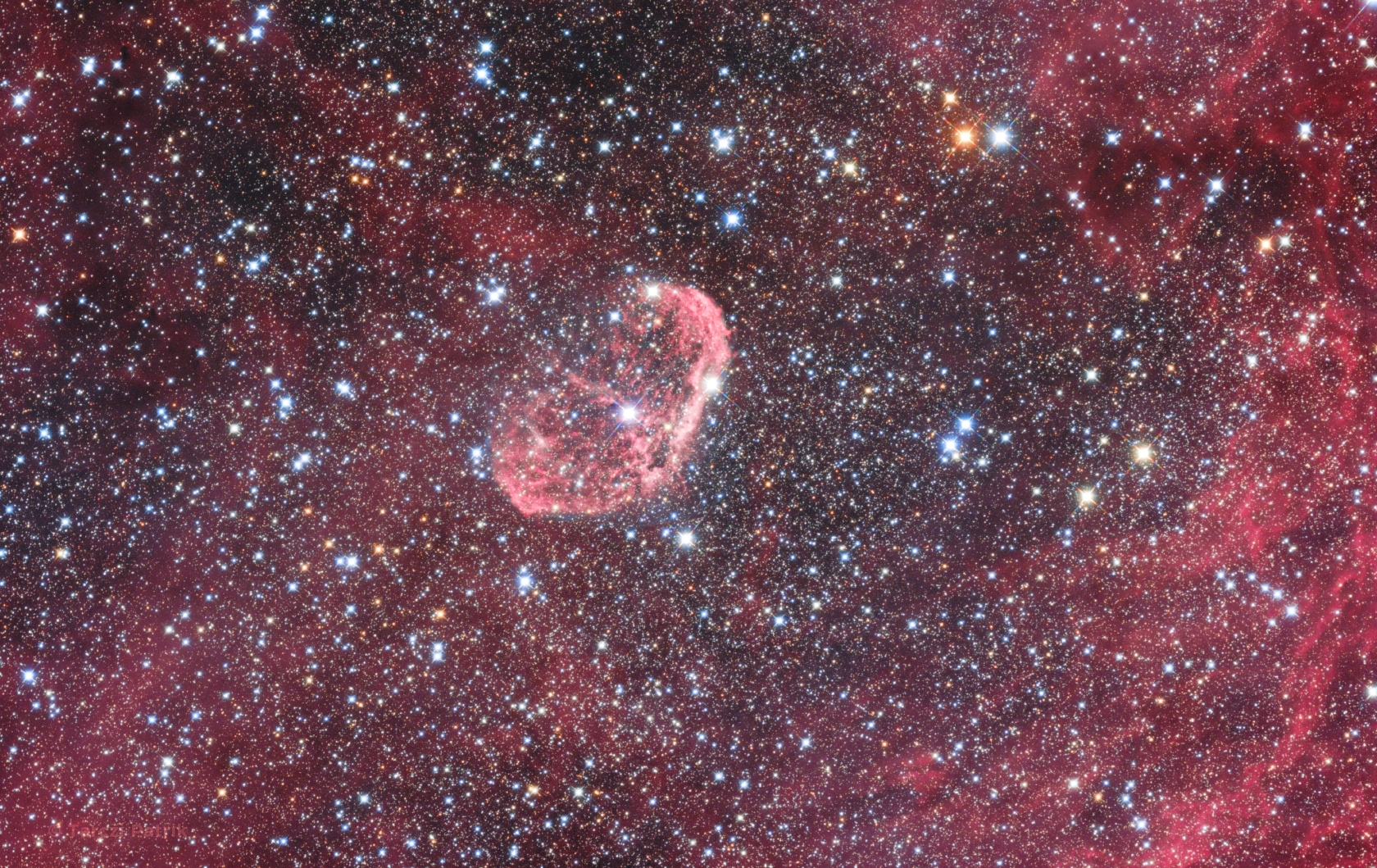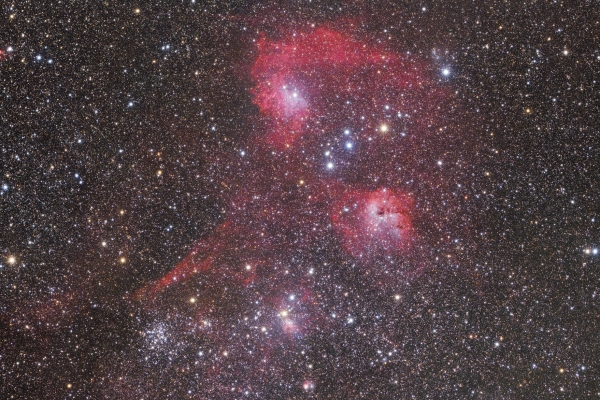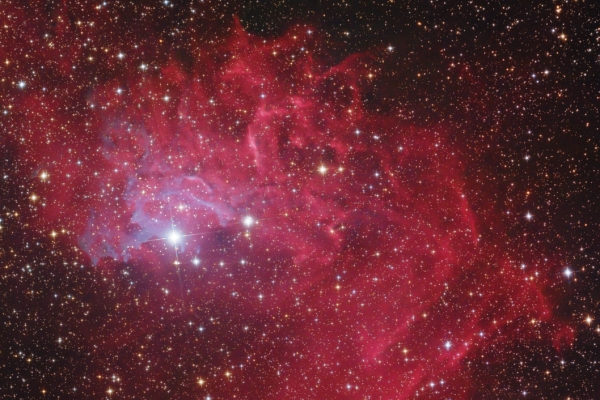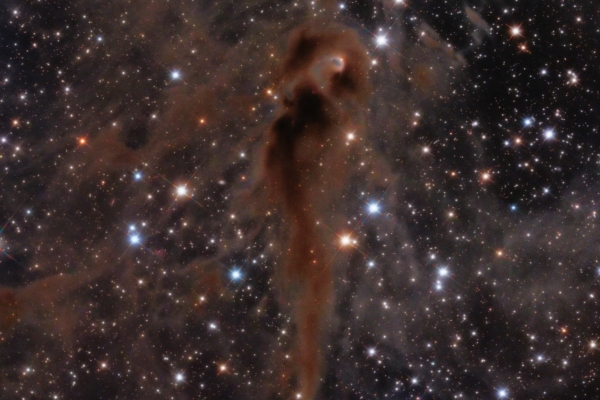The Crescent Nebula
NGC6888

Technical data
| Instrument: | 173/700 Newton-astrograph (ZsIO), TeleVue Paracorr II |
| Camera: | Canon EOS 60D (modified) |
| Filter: | Baader UV/IR block, Astronomik CLS |
| Mount: | SkyWatcher EQ-6 Pro |
| Guiding: | Lacerta M-Gen autoguider |
Image data
| Exposure time: | Összesen 21 hours ISO800 |
| Location, date: | Hungary, Izsákfa, Mount-Mátra, Ágasvár - 2013. May-August |
| Transparency: | 6/10 |
| Seeing: | 6/10 |
| Temperature: | 14 °C |
| Processing: | CCDStack, Registar, Pixinsight LE, Photoshop |
Description
NGC 6888, also known as the Crescent Nebula, is a cosmic bubble about 25 light-years across, blown by winds from its central, bright, massive star. NGC 6888's central star is classified as a Wolf-Rayet star (WR 136). The star is shedding its outer envelope in a strong stellar wind, ejecting the equivalent of the Sun's mass every 10,000 years.
The nebula's complex structures are likely the result of this strong wind interacting with material ejected in an earlier phase. Burning fuel at a prodigious rate and near the end of its stellar life this star should ultimately go out with a bang in a spectacular supernova explosion. Found in the nebula rich constellation Cygnus, NGC 6888 is about 5,000 light-years away.
Technical data
| Instrument: | 173/700 Newton-astrograph (ZsIO), TeleVue Paracorr II |
| Camera: | Canon EOS 60D (modified) |
| Filter: | Baader UV/IR block, Astronomik CLS |
| Mount: | SkyWatcher EQ-6 Pro |
| Guiding: | Lacerta M-Gen autoguider |
Image data
| Exposure time: | Összesen 21 hours ISO800 |
| Location, date: | Hungary, Izsákfa, Mount-Mátra, Ágasvár - 2013. May-August |
| Transparency: | 6/10 |
| Seeing: | 6/10 |
| Temperature: | 14 °C |
| Processing: | CCDStack, Registar, Pixinsight LE, Photoshop |
Recommended photos

In the heart of constallation Auriga
Rich in star clusters and nebulae, the ancient constellation of the Charioteer (Auriga) rides high in northern winter night skies.

The Flaming Star Nebula
A runaway star lights the Flaming Star Nebula in this cosmic scene. The Flaming Star Nebula's billowing interstellar clouds of gas and dust located in constellation Auriga.

The Foal Nebula
Sitting in Cepheus not far from the Iris Nebula a network of Lynds Bright and dark objects can be found. This picture shows part of LBN468 which contains LDN 1150, 1155.


